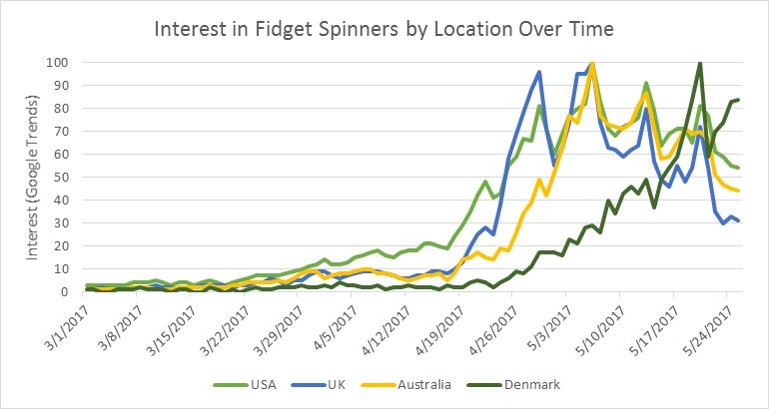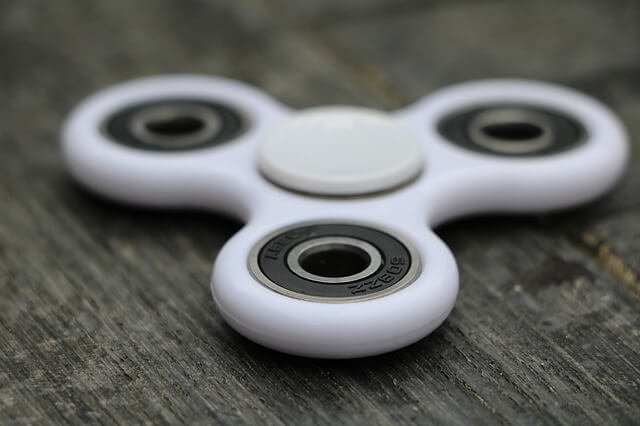The new craze is in full swing. Business is booming, people are spinning, and there doesn’t seem to be an end in sight - or does there?
For those out of the loop
Those of you with kids will have surely heard about them, but for those drawing a blank, fidget spinners are stress-reducing plastic toys which spin on a metal bearing. Think of squeezing a stress ball, playing with keys, flipping a coin, bouncing your leg - each being a different way to achieve the same thing.
That begs the questions: Why not just play with keys? What makes it so special that it has the world in a frenzy? As with most toys that go viral, it comes down to the Media/Consumer/Producer trio and with technology never being more accessible.
The Media
Right before Christmas in 2016, James Plafke wrote an article for Forbes titled “Fidget Spinners Are The Must-Have Office Toy For 2017”. In it, he mentions the successful Kickstarter campaign for a fidget cube and the new-on-the-scene Torqbar (variation of the spinner you see today). He goes on to list the benefits and drawbacks to having one - that’s it.
The real traction came from threads popping up on Reddit and YouTube videos being created every hour.
Soon, media outlets were writing stories about the craze, niche websites were putting their own twist on it, and people were even voicing their concerns/criticisms such as that kids may become more distracted, and that it should only be for people suffering from ADHD, etc.
Imagine what this did to the second part of the trio.
The Consumer
Starting from an article, going up to threads & videos, and then being picked up by mainstream media was like a snowball - starting small and ending up as the size of a house. For instance, check out this chart which shows the Google Search interest for the term by week.

Things were pretty mild up until mid-March when the early adopters who were seeing their idols play with them decided to join in (or simply wanting to get their distractibility in check). By mid-April, searches took off in the major regions/countries.
It’s interesting how fast Australia & the United Kingdom caught up to the USA in terms of search interest.
The Producer
Despite Catherine Hettinger, who was studying to become a chemical engineer, being widely accepted as the inventor of the toy, popularity only came in early 2017 - long after her patent expired in 2005.
With no protection and people waving credit cards in the air, nimble entrepreneurs jumped at the opportunity by contacting manufacturers and getting production under way.
The simplicity of design, coupled with the might of production in places like China, had no match for the overwhelming demand. Stories started coming out about how retailers were selling out in a day and having to put in large bulk orders.
Where to from here?
Each part of the trio is thriving. The media is racking up ad views; the consumers have a new toy to play with, and the producers are turning plastic & bearings into cash.
But look at the chart again. Although smaller markets had a late start and are still growing rapidly, the big markets are showing signs of cooling. Yeah, Google Trends isn’t the best data source to gauge market demand, but this happens so often it’s hard not to predict where the ship is going.
There’s a whole theory around it - diffusion of innovations. If we are currently in the late majority stage, retailers must think about how to push stock to places like Denmark once interest all shifts to the next best office toy.

